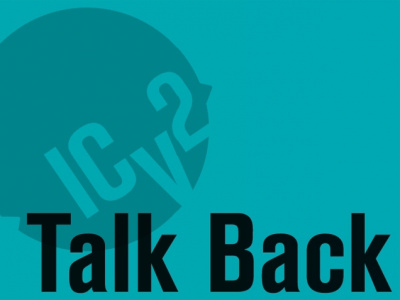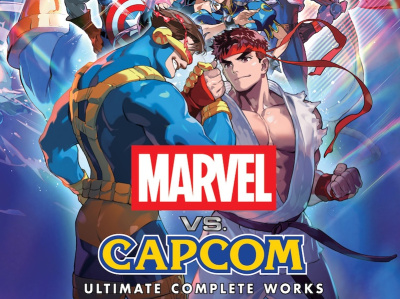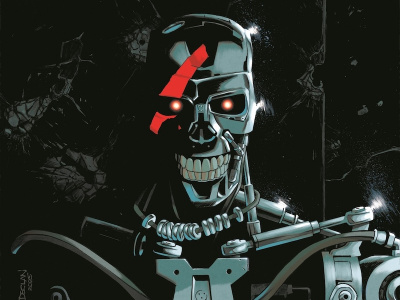 Michael Breakfield of Lone Star Comics in Arlington, Texas joins the discussion regarding Marvel's upcoming Summer crossover (see "Marvel Announces Summer Crossover").
Michael Breakfield of Lone Star Comics in Arlington, Texas joins the discussion regarding Marvel's upcoming Summer crossover (see "Marvel Announces Summer Crossover").A couple of weeks ago Marvel announced its plans for a big company-encompassing crossover titled Fear Itself! This seemed to stir up a hornets nest as column after column turned up on the web, voicing the displeasure of retailers around the country. It sparked quite a discussion in the Lone Star Comics Office. This is a topic that Buddy Saunders, owner of Lone Star Comics, Doug Shark, our head comics buyer, and I discuss quite often. This column is a result of the recent announcement and following backlash.
The announcement of the "Big Event" crossover immediately brings to mind (at least these days it does) the over saturation of the comic rack. Too many tie-ins, one-shots, and miniseries; more than the average comic reader can keep up with. If the reader wants to follow the whole story they must pick Big Event Book #1-4, plus One-Shot A, B, and C, not to mention the three 5-issue miniseries that lead into the event, and all the monthly titles that decide to carry said Event's banner that month. That's a lot to ask of someone's budget, especially when you factor in the price of comics these days.
Shadowland is an example of how not to do a "Big Event." There is the main storyline running through both Shadowland #1-5 and Daredevil #508-512 (1998-2010 2nd Series). Now, that is perfectly acceptable, a cohesive story running through DD's main title and tying directly into the main event. Where the wheels come off is when, in order to get the whole "Shadowland Experience," the reader must also purchase the Shadowland Prelude: Daredevil: Cage Match; the five One-Shots (Shadowland: Elektra, Ghost Rider, Spider-Man, Bullseye, and After the Fall); the four Shadowland miniseries (Shadowland: Blood in the Streets, Daughters of the Dragon, Moon Knight, Power Man); and the 2-issue tie-in from Thunderbolts #148-149. That's a lot, right? Well, that's relatively small when compared to other company-wide crossovers like Civil War, Secret Invasion, and New Krypton/World without Superman.
Some comic dealers report that their customers become so frustrated and confused that they just stop buying the story all together. We here at Lone Star Comics developed our "Crossover" search section for customers to try to help them keep up).
These "Big Events" may be good stories. That's not what is being debated here (though in some cases it could). Where the discourse comes from is in how the "Big Events" are now presented. A "Big Event" should not automatically mean flood the market with as many different titles as possible. The story should be the event, and if the story is good the customers will follow. A "Big Event" should not be convoluted stories where the reader must buy all 30 chapters taking place in twelve different titles in order to get the whole story. [NOTE: And don't even get me started on Variant Covers. That is a topic for another day.]
Planet Hulk is an example of how to do a "Big Event." It's an epic tale self contained within the comic of its title character. It's rich in continuity so that long time comic fans can enjoy it (the Illuminati think the Hulk is a danger to mankind so they blast him into space), and it has a beginning, middle, and end so that new readers can jump on board and enjoy the ride. And the best thing about Planet Hulk is that the customer only had to pick up the one title to enjoy the tale. This leaves his mind free from trying to track down all the different tie-in titles and his wallet plump, allowing him to check out other stories in other titles he might not before if he had to worry about buying all the tie-ins.
Again, this is not an accusation stating that "Big Events" are bad, it's just that they could be handled better. Remember Marvel Super Heroes Secret Wars? That was one of the original "Big Events." It was a self-contained story within the pages of a 12-issue miniseries. The reader didn't have to buy ten other one-shots, miniseries, and tie-ins to get the story. In fact, it was seeing the aftermath of the "Big Event" which was part of its appeal. As the heroes returned to Earth, mysteries were presented. Why is Spider-Man wearing a black costume? (see Amazing Spider-Man #252) Why is the She-Hulk a member of the Fantastic Four? (see Fantastic Four #265) Where is the Thing? (see Thing #11) Why is Dr. Banner losing control of the Hulk? (see Incredible Hulk #295-300) Where did that giant fire-breathing dragon come from that is demolishing Tokyo? (see Uncanny X-Men #181) Why is there suddenly a rift between young lovers Colossus and Kitty Pryde? (see Uncanny X-Men #183) All these questions and more would be answered in the pages of Marvel Super Heroes Secret Wars. So the reader is treated to a "Big Event" and their monthly titles are not interrupted by "Big Event Banner Tie-In Syndrome." [NOTE: Just made that up. Going to throw it out there and see if it sticks.]
The Sinestro Corps War is yet another example of how to do a "Big Event." It takes place within the confines of the Green Lantern and Green Lantern Corps titles and gives the readers an exciting tale that they can easily keep up with without going broke. It does include four tie-in one-shots (see Tales of the Sinestro Corps), but those just add layers to the villains of the piece. They aren't necessary to get the full enjoyment of the story but they are cool for the fanboy that wants more.
So a "Big Event" can be done without overwhelming the readers and comic racks with dozens of new miniseries, one-shots, and tie-ins. The "Big Event" is not necessarily a bad thing, if done right.
The opinions expressed in this article are solely those of the writer, and do not necessarily reflect the vie of the editorial staff of ICv2.com.







